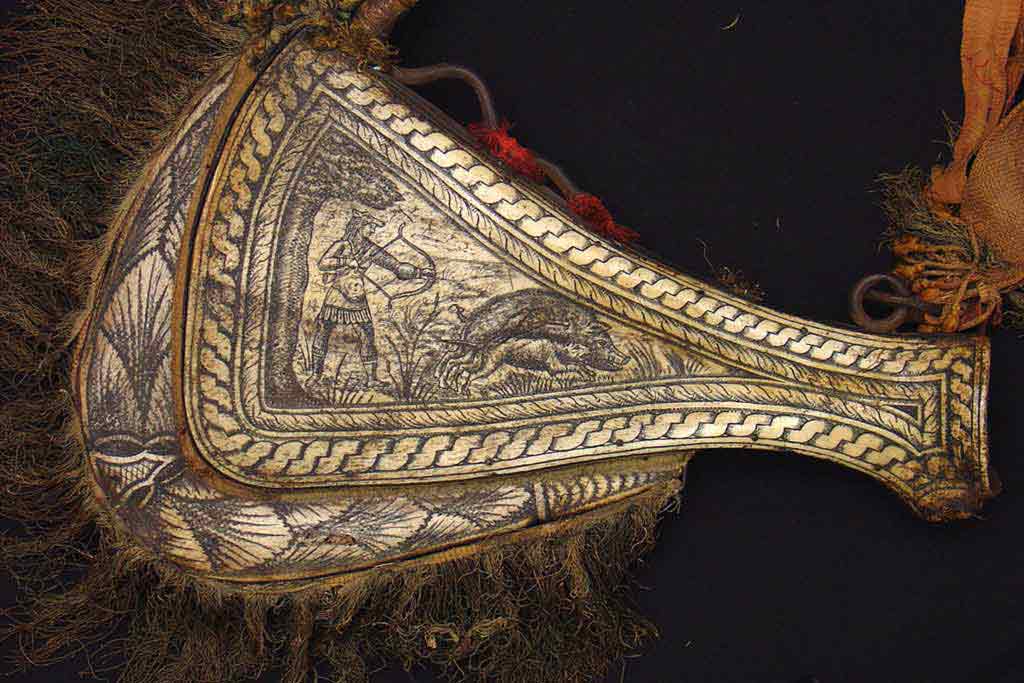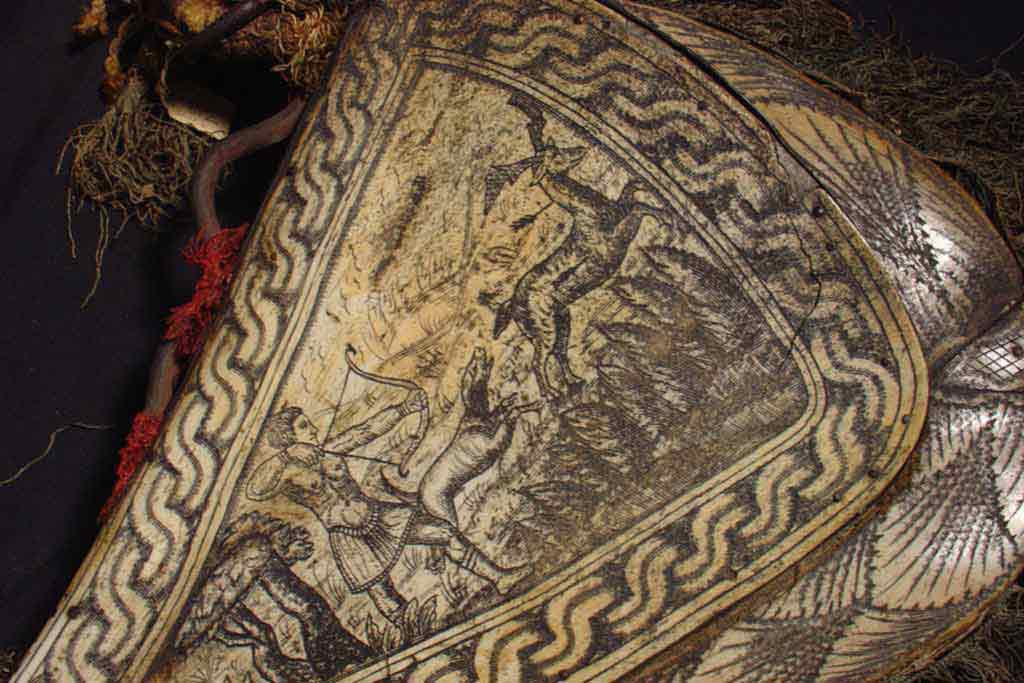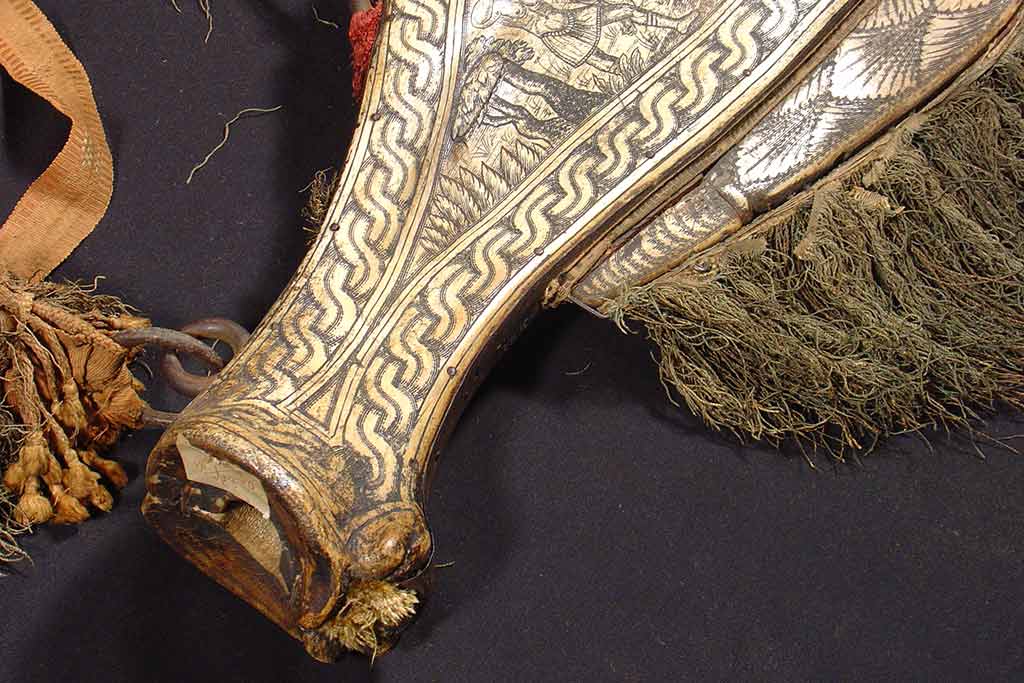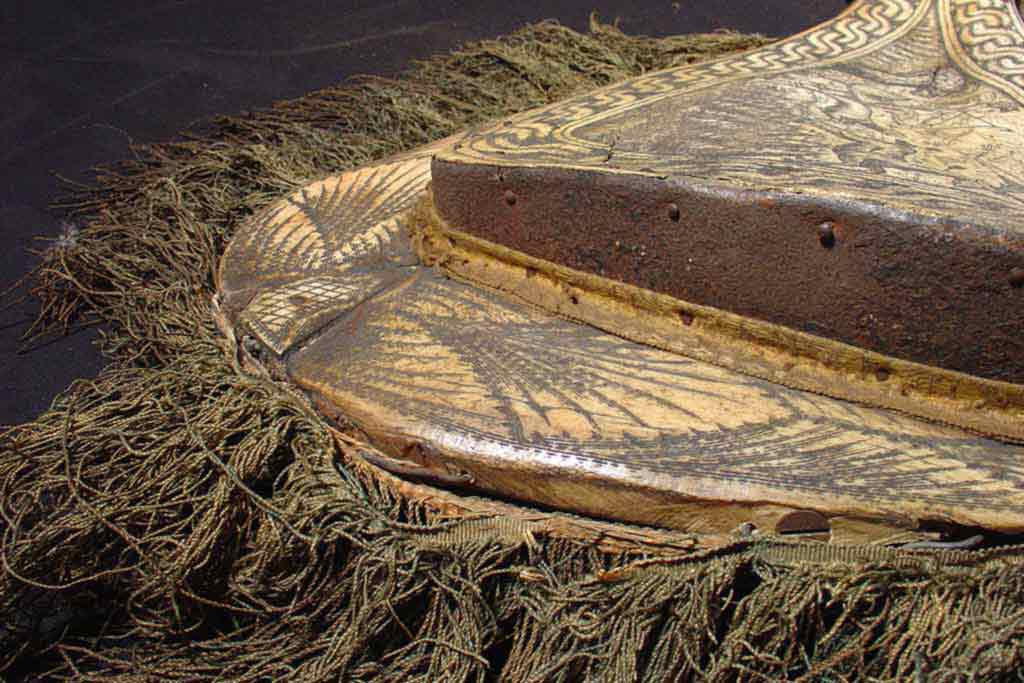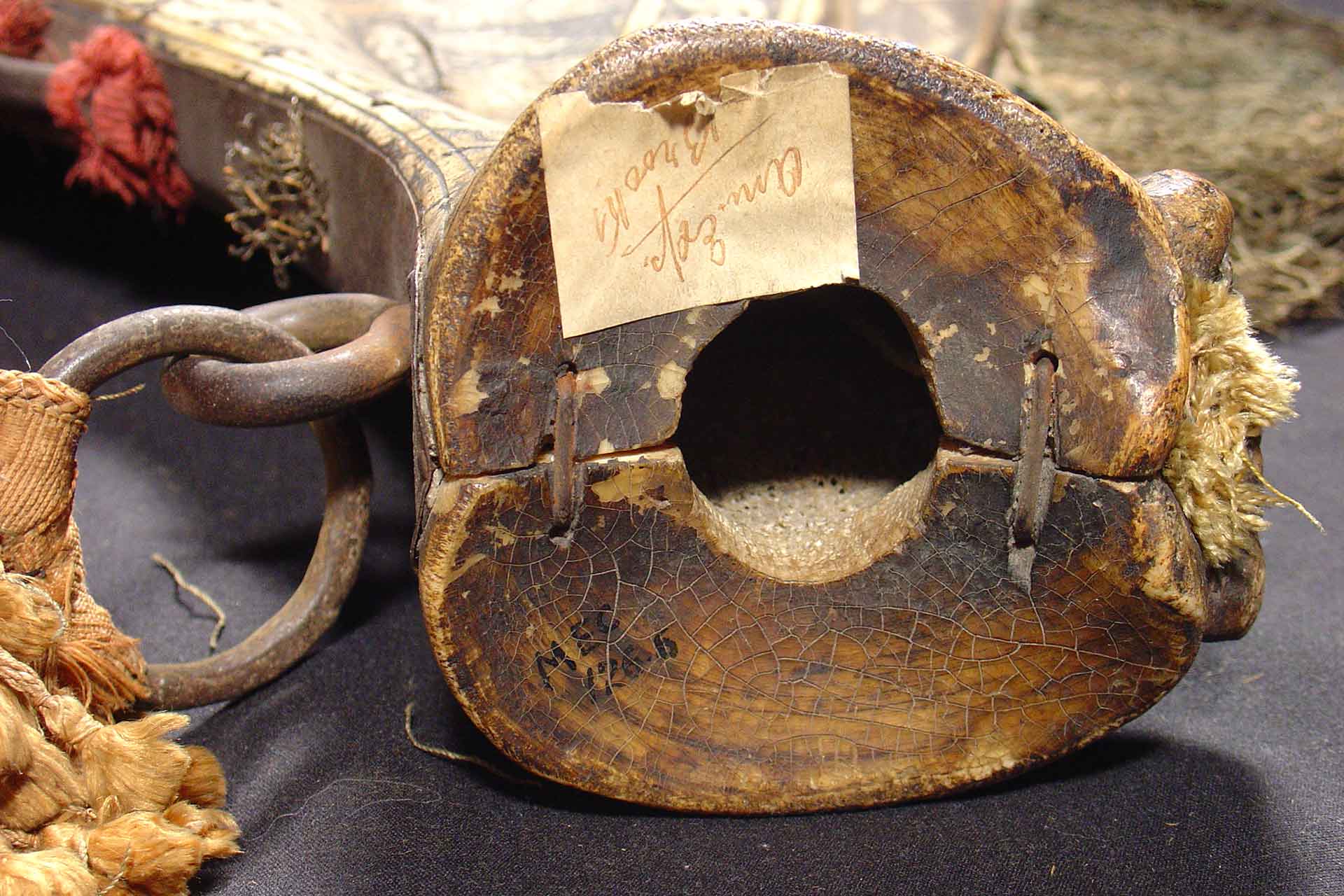
Featured Object: German Powder Horn
- Post Date: 9/16/2017
- Reading Time: 2 minute read
This German powder horn was used to carry gunpowder for either warfare or, based on the carved scenes, more likely hunting. One side shows a man shooting a wild boar with a gun, the other side shows a huntress out with her hound shooting at a deer with an arrow. The materials used and the craftsmanship are of a high quality, indicating that this horn was most likely used by someone of nobility or another rich individual, such as a successful merchant.
Powder horns are made using a variety of processes. First a suitable animal horn, most commonly cow, is selected with the size, shape, color, and quality being considered. The horn is then hollowed out and lightly boiled so that the mouth can be stretched or shrunk to make a waterproof and airtight seal. The mouth is then cut and squared and the tip end trimmed. Next the mouth is plugged with a soft wooden plug, usually made of pine or poplar. Finally the horn is scraped and polished. This horn was also decoratively carved using the nautical scrimshaw method and decorative horsehairs and a carrying strap were attached.
This powder horn is noteworthy because it indicates the power and wealth nobles had in order to afford intricate and high quality luxury goods like an intricately decorated powder horn. During the 1600s, when this horn was made, German nobles, especially smaller petty nobles, were known for spending money to outwardly broadcast their class status with luxury goods.
This article was originally published on 8/19/2006, but is presented here with expanded photography.
-
- Share:
- Subscribe to Newletter
- Giving
